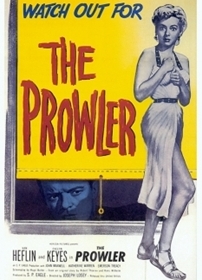 “Louis B. Mayer once looked at me and said, ‘You will never get the girl at the end.’ So I worked on my acting.” – Van Heflin
“Louis B. Mayer once looked at me and said, ‘You will never get the girl at the end.’ So I worked on my acting.” – Van Heflin
I’m glad he did. Heflin, one of my favorite ’40s/’50s actors, had charisma and presence to spare, even if he wasn’t classically handsome. A case in point is 1951’s “The Prowler” by Joseph Losey, which played Saturday night at LACMA, after “Murder by Contract” and “Nightfall,” the last in the Mid-century California Noir series.
My favorite was “The Prowler,” recently restored by UCLA and the Film Noir Foundation. Here, Heflin plays Webb Garwood, a sleazy cop who’s called to a posh, Spanish-style Los Angeles home by lovely and lonely Susan Gilvray (Evelyn Keyes) after she has a vague suspicion that an intruder is lurking in the garden. Turns out, there’s no one there, but Webb and Susan hit it off and soon begin an affair. Susan’s nights are often free because her DJ husband, John, is at the radio station broadcasting his show.
It’s a love triangle in the vein of “Double Indemnity” and “The Postman Always Rings Twice” though here it’s Webb, not the femme fatale, who seizes the opportunity to do away with the wealthy husband and snag some money. Webb shoots John, apparently in the line of duty, leaving him free to marry Susan, ditch police work and move to Vegas.
When Susan announces she’s preggers, it crimps the plan rather a lot because the birth will reveal the true timing of their relationship. (This is actually a shocking plot turn because it reveals beyond a doubt that their relationship was sexual – other noirs hint at this, of course, but I can’t think of another example where it is so explicitly established. Not sure how they got that past the censors.) The two take off for a remote mountain town so she can secretly bear the child with no witnesses around. Once there, however, Webb reveals his knavish, venal nature and Susan takes action of her own.
Heflin perfectly inhabits this deeply flawed character, lending him charm and complexity, even making you sort of like him at times. He could play a snake so memorably – he won the Best Supporting Actor Oscar as a gangster’s pal in “Johnny Eager” and he was excellent in both “Possessed” with Joan Crawford and “Act of Violence,” where he played an Army traitor. Another noir highlight was playing Philip Marlowe on NBC radio in the late 1940s.
Heflin was just as adept at playing average Joes and good guys, most notably in “The Strange Love of Martha Ivers” (a film noir with Barbara Stanwyck and Kirk Douglas), “Shane” and “3:10 to Yuma.”
Keyes’ Susan is no vampy seductress. Instead, she plays the character as written – bland, bored and slightly feckless. Perhaps a fish out of water in the big city; she and Webb bond because they both hail from Terra Haute, Ind., albeit from different sides of the tracks. Keyes conveys that Susan is more than just bored – she yearns for children and perhaps something more than she finds in her cushy but unhappy marriage. And to her credit Keyes completely abandons her glamorous exterior when she’s sweating it out in the mountains.
Blacklisted writers Dalton Trumbo and Hugo Butler produced the script based on a story by Robert Thoeren and Hans Wilhelm. Trumbo provided the voice for Susan’s DJ husband; he is completely uncredited on the film.
It’s a movie that grabs you quickly and doesn’t let go – a testament to Losey’s marvelous direction. Cahiers du cinema pointed to “The Prowler” as the moment Losey became a true auteur. And Losey, who suffered professionally because of his supposed ties to the Communist Party, put it this way: “‘The Prowler’ to me is, and always has been, a film about false values. About the means justifying the end and the end justifying the means. $100,000 bucks, a Cadillac and a blonde were the sine qua non of American life at that time and it didn’t matter how you got them.”
For me, “The Prowler” was the hit of the LACMA triple-bill, though “Murder by Contract” (1958, Irving Lerner) and “Nightfall” (1957, Jacques Tourneur) also made compelling viewing. In “Murder,” written by Ben Maddow and Ben Simcoe, luscious Vince Edwards gives a thoroughly haunting performance as a smart, precise, driven hitman; slick cinematography by the brilliant Lucien Ballard and original guitar music by Perry Botkin add to the mood of tension and doom. The film was a key influence on Martin Scorsese and “Taxi Driver.”
Evocative visuals and location shooting in LA and Wyoming, courtesy of Tourneur and first-rate cinematographer Burnett Guffey, make “Nightfall” easy on the eyes. Given that the movie is based on a David Goodis novel (Stirling Siliphant wrote the script), I was disappointed that I found myself drifting in and out of the slightly thin story. Perhaps a dynamic lead actor, like Van Heflin, could have injected more drama, but Aldo Ray as an innocent man on the run just didn’t do it for me. His one-note realization lacked depth and nuance.
That said, I liked Brian Keith as his bad-guy nemesis (Keith probably could have played Ray’s part quite well) and Anne Bancroft as Ray’s romantic interest, a model and sometime bar-fly. Chris Fujiwara, author of “The Cinema of Nightfall: Jacques Tourneur,” calls her “one of Tourneur’s most distinctive heroines.”
And any film noir that features a sumptuous fashion show at the Beverly Hills Hilton is more than all right by me.
“Murder by Contract” and “Nightfall” are available from Sony Pictures Home Entertainment in the Film Noir Classics series; “The Prowler” from VCI Entertainment.

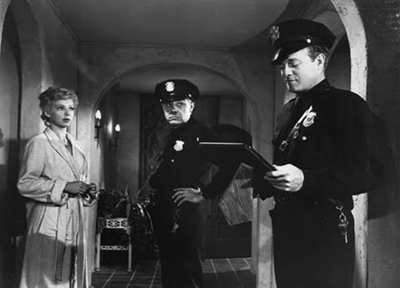
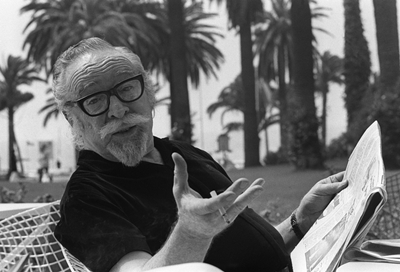





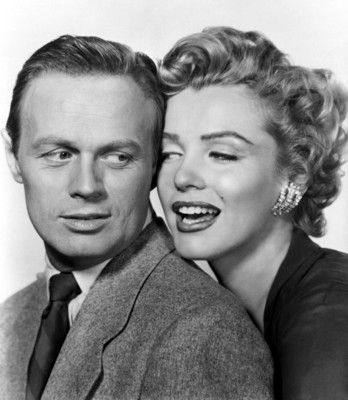
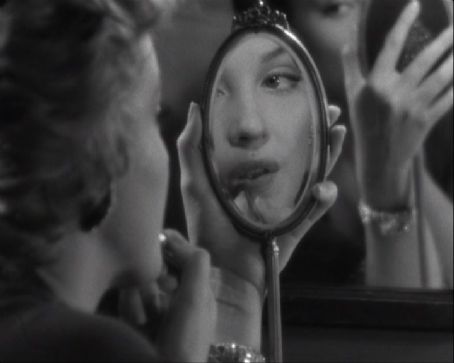
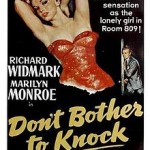





From FNB readers